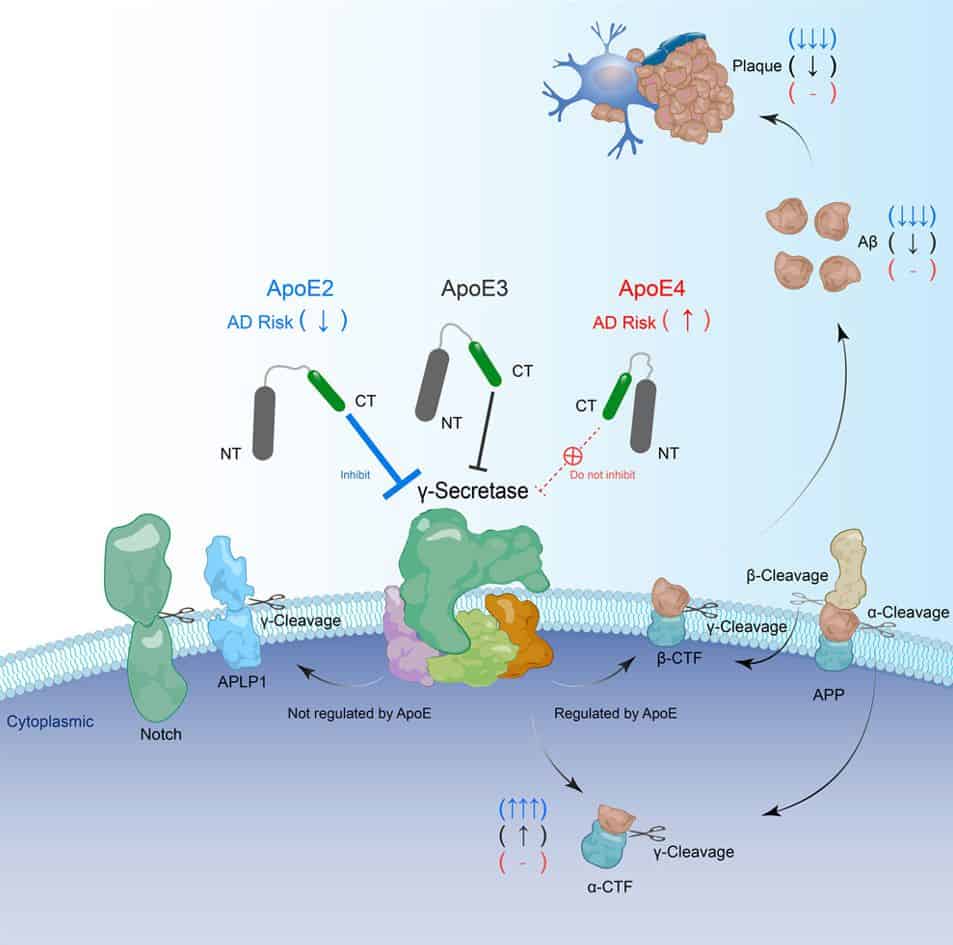A recent study has uncovered a crucial link between the rare early-onset and common late-onset forms of Alzheimer’s disease, potentially leading to more effective treatment strategies for the latter.
The discovery of this missing link offers a new perspective on the disease and could change the way we approach treatment for common late-onset Alzheimer’s disease.
Alzheimer’s disease (AD) is a neurodegenerative disorder that affects memory and cognitive functions, primarily in older adults, and can be categorized into two forms: rare early-onset familial AD (fAD) and common late-onset sporadic AD (sAD).
Although both fAD and sAD share the formation of amyloid plaques as a common brain pathology, they differ in genetics, suggesting distinct pathogenesis mechanisms may be involved.
This raises a critical question regarding the effectiveness of targeting amyloid plaques as a treatment strategy for common sAD, and highlights the need to consider alternative approaches.
Prof. Chen Yelin’s group from the Interdisciplinary Research Center on Biology and Chemistry at the Shanghai Institute of Organic Chemistry of the Chinese Academy of Sciences has recently published a study in the journal Neuron that could provide valuable insights into the pathogenesis of Alzheimer’s disease.
By investigating the mechanistic relationship between the most common pathogenic risk factor for the common late-onset sporadic Alzheimer’s disease (sAD) and the disease-causing genetic factors of the rare early-onset familial Alzheimer’s disease (fAD), the researchers have uncovered a crucial missing link.

Specifically, the study sheds light on how the presence of ApoE4 promotes the formation of amyloid plaques, providing a potential target for the development of new therapeutic strategies for both sAD and fAD.
The genes responsible for processing amyloid precursor protein (APP), which include APP itself and γ-secretase cleavage subunits (PS1 and PS2), have been found to promote the development of familial Alzheimer’s disease (fAD) by accelerating the formation of amyloid plaques. However, in the case of common late-onset sporadic Alzheimer’s disease (sAD), almost 99% of cases do not carry mutations in these genes.
Interestingly, individuals carrying two copies of the ApoE4 variant have a significantly higher risk of developing late-onset sAD – up to ten times higher compared to those with the normal ApoE3 variant. Conversely, the ApoE2 variant has been found to significantly lower the risk of developing sAD.
Since the amino acid sequences of ApoE2, ApoE3, and ApoE4 only differ by 1-2 amino acid residues, it has been a mystery for a long time why different ApoE variants have such a big effect on the development of sAD.
Researchers found that different ApoE isoforms directly and differently blocked the γ-cleavage of APP. They also showed how different ApoE isoforms may change the risk of developing sAD. In contrast to ApoE4, ApoE2 has the highest inhibitory action on APP’s γ-cleavage.
The study’s findings suggest that the abnormal cleavage of APP by γ-secretase is a common pathogenic factor in both forms of the disease. The researchers also identified the C-terminal region of ApoE as a substrate-specific inhibitor of γ-secretase, offering potential therapeutic options for treating Alzheimer’s disease.
Image Credit: Getty
